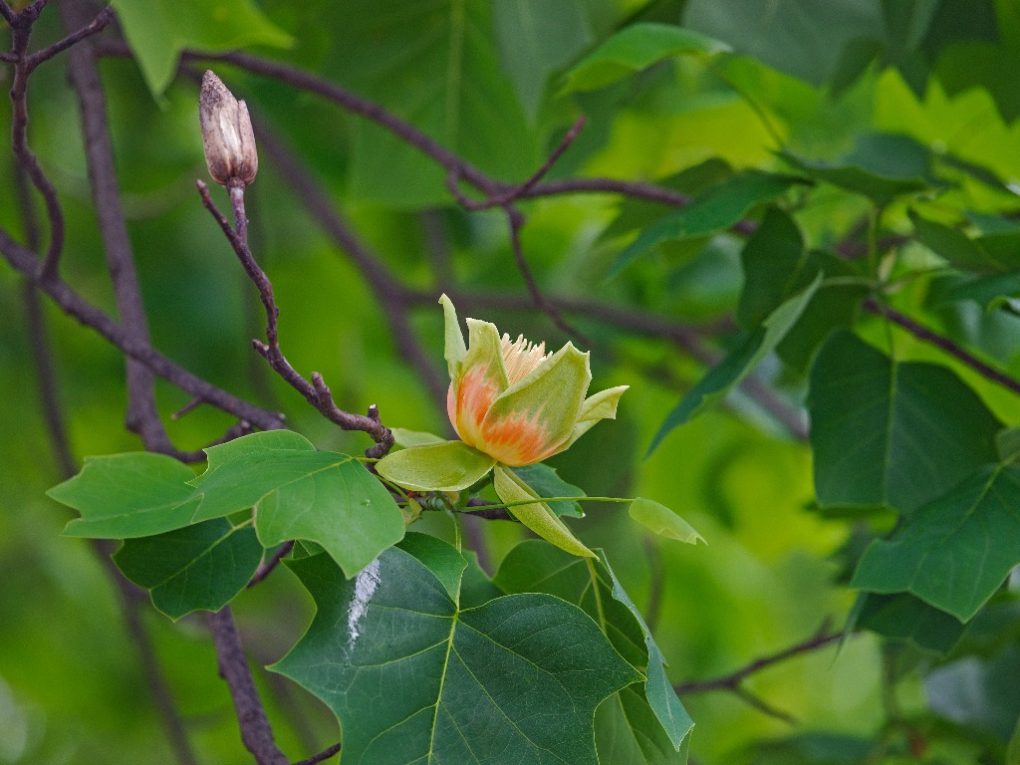How Tall Can a Tulip Tree Grow: Understanding the Growth Potential of Liriodendron Tulipifera
On average, tulip trees grow between 80 and 120 feet (24 to 37 meters) tall. However, under ideal growing conditions, they can reach heights up to 190 feet (58 meters). The trunk can also be quite large, with a diameter of up to 10 feet (3 meters) in mature trees.

Tulip trees are fast-growing and can grow up to 2-3 feet per year under ideal conditions. They are commonly found in the eastern United States, from southern Michigan down to northern Florida and from the Atlantic coast to the Mississippi River.
Tulip trees are prized for their tall, straight trunks and showy flowers, which resemble tulips and bloom in the spring. They are also valued as a timber source and used for furniture, cabinetry, and other woodworking projects.
Table of Contents
Factors Affecting Tulip Height Height
Genetics
Genetics plays a significant role in determining the height of a tulip tree, as it does for any other plant or tree species. The genetic makeup of a tulip tree determines its growth rate, overall size, and structure. Different cultivars of tulip trees can have varying growth habits and potential heights due to genetic differences.
The height of a tree is largely determined by the length and structure of its trunk, which is influenced by genetics. Trees with genes that promote vertical growth will grow taller than those with genes that favor lateral growth. Additionally, the branching pattern of a tree is also influenced by genetics, which can impact the tree’s height.
Tulip tree breeders and growers can select for certain genetic traits that promote tall growth or other desirable characteristics, such as disease resistance, branching patterns, and flowering habit. Over time, these selections can lead to new cultivars better adapted to specific growing conditions or unique aesthetic qualities.
Water Availability
Water availability is another important factor that can impact the height of a tulip tree. Water is essential for tree growth, nutrient transport, photosynthesis, and cell turgor pressure. Tulip trees require moderate to high water, and a lack of water can limit their growth.

If the soil is too dry, the tree may not be able to take up enough water to support its growth, which can result in stunted growth or wilting. On the other hand, if the soil is consistently waterlogged, it can suffocate the roots and lead to root rot, which can also cause the tree to die.
To ensure adequate water availability for tulip trees, it is important to plant them in soil with good drainage to avoid overwatering and to irrigate the tree during dry periods. Mulching around the tree’s base can also help retain moisture in the soil and regulate soil temperature, improving the tree’s growth and overall health.
Pruning
Pruning is an important practice that can help promote the growth and health of a tulip tree. Proper pruning can help remove dead or diseased branches, shape the tree’s growth pattern, and promote the growth of new branches and leaves.
One of the key reasons to prune a tulip tree is to remove dead or diseased branches. These branches can be a safety hazard, as they may fall off and cause damage or injury. Also, diseased branches can spread the disease to other parts of the tree or neighboring trees, harming the entire ecosystem’s health.
Another reason to prune a tulip tree is to shape its growth pattern. Tulip trees can become quite large, and their branches can grow in various directions. Pruning can help encourage the tree to grow in a specific direction, which can be useful if the tree is growing near a building or power line.
Climate
Tulip trees grow best in temperate climates with mild winters and moderate rainfall. They are hardy in USDA plant hardiness zones 4 to 9. Therefore, providing adequate irrigation to keep trees healthy in hot and dry summers is important.
Frost and freezing temperatures can damage the tree’s leaves and branches, while hot and dry conditions can cause water stress, limiting the tree’s growth. In suitable climates, tulip trees can grow quite tall, reaching heights up to 150 feet (45 meters) or more. However, in regions with less optimal growing conditions, the tree may need help to reach its full height potential.

Soil Type
Tulip trees prefer well-draining soil that is rich in organic matter. They can tolerate various soil pH levels, from slightly acidic to alkaline. However, they could do better in compacted or poorly drained soil, so it is important to avoid planting tulip trees in areas prone to flooding.
Soil quality is an important factor that can impact the height of a tulip tree. Trees require healthy and nutrient-rich soil to support their growth and development. The quality of the soil can influence the availability of water, nutrients, and oxygen, all of which are essential for tree growth.
If the soil is too compacted or lacks sufficient organic matter, it can limit the tree’s growth by reducing the availability of water and nutrients. Poorly-drained soils can also restrict root growth and lead to root rot, which can cause the tree to die. On the other hand, soil that is too sandy or gravelly may not retain enough moisture to support the tree’s growth.
Sunlight
Tulip trees prefer full sun to partial shade, and they require at least six hours of direct sunlight per day to grow to their full height potential, according to Arbor Day Foundation. If the tree is grown in too much shade, it may not receive enough sunlight to produce the energy it needs to grow tall and strong. On the other hand, if the tree is exposed to too much direct sunlight or heat, it may experience water stress, which can stunt its growth or cause it to wilt.
Benefits of Growing Tulip Trees
Aesthetic Value
Tulip trees are known for their beauty and grandeur. They are one of the tallest trees in North America, reaching up to 150 feet in height. The trees have a straight trunks that can reach up to three feet in diameter, and their leaves turn a beautiful golden yellow in the fall. The tulip-shaped flowers that bloom in the spring are also a sight to behold. Upon seeing lots of tulip trees, they add a touch of elegance and sophistication to any landscape.

Environmental Benefits
Tulip trees offer numerous environmental benefits. They are excellent at absorbing atmospheric carbon dioxide and releasing oxygen. They also provide shade, which can help to reduce the temperature in urban areas and lower energy costs. Tulip trees are also a great habitat for wildlife, providing food and shelter for birds, insects, and small mammals.
Economic Benefits
Tulip trees have several economic benefits as well. They are a valuable timber source for furniture, flooring, and other wood products. The trees also have a high survival rate and require little maintenance, making them a cost-effective choice for landscaping.
Additionally, the aesthetic value of tulip trees can increase the property value of homes and businesses. In summary, growing tulip trees can provide numerous benefits, including aesthetic value, environmental benefits, and economic benefits. These trees are a beautiful and practical addition to any landscape, providing shade, a habitat for wildlife, and a source of timber.
